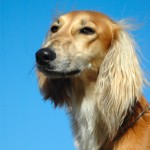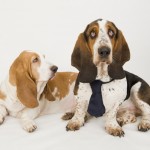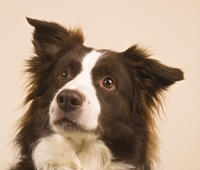Hounds Breed Overview
Some of the oldest dog breeds in the world are amongst the hound group, e.g. some evidence can be found in Egypt in the tomb of the pharaohs. Most hounds were originally used for their hunting instincts either by sight or scent. Beyond this, it is difficult to find generalisations amongst the breed as there are quite a mix of sizes (from the giant Irish Wolfhound to the small Dachshund), coat types and attitudes.
The Hound Group can be divided in two groups:
– The Sight Hound group i.e. Saluki, Afghan, Borzoi, Pharaoh Hounds, Basenji, Deerhound, Otterhound, Whippet and Elkhound which are believed to date back to 5000 BC.

Saluki
Sight Hounds possess a lean, powerfull body with a deep chest and long legs which give them both speed and a phenomenal gift of stamina. They also have exceptional eyesight, this combined with the speed and stamina are what make them so efficient at catching the intended prey once spotted. Typical examples of sight hounds are the Whippet and Greyhound. Using these strong characteristics they can be used for racing or hare coursing. Others in the group can be described as proud and aloof nevertheless they can make trustworthy companions. They all will require a significant amount of exercise.
– Scent Hound group i.e. Bloodhound, Dachshund, Beagles, Foxhound, Rhodesian Ridgeback and various Basset Hounds.
Scent Hounds rely strongly on the sense of smell to follow the trail of a prey, such as the Bloodhound, quite literally follow their noses. Eyesight and speed is of less importance.
Only second to the Bloodhound, the Basset Hounds are specially good at scent tracking, and due to this very strong instinct could easily wander off following their nose if they are left unattended in an open space. Early training of walking on the lead is strongly recommended as they can have a one track mind when following an interesting scent, and will pull you in all directions.
Scent Hounds are friendly and social; many have been bred to hunt in packs and therefore enjoy the company of other dogs.

Basset Hounds
After many thousands of years of breeding, and valued for their independence of thought, the breed is generally not the easiest to train; the Afghan which a very independent spirit being the most challenging with the Ridgeback being the most obedient in the group. Nevertheless they can make good family dogs and can get along with other family pets, however some might be tempted to chase the neighbour’s cat.
Claudie on November 23rd 2009 in Hounds
